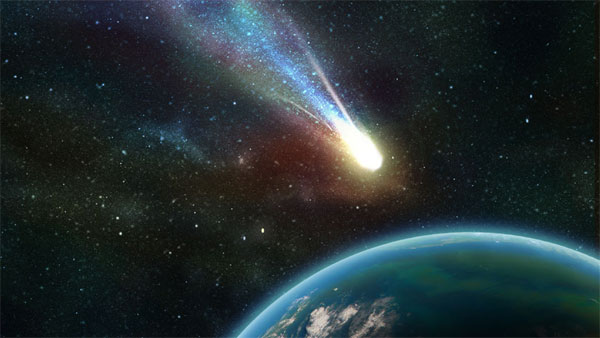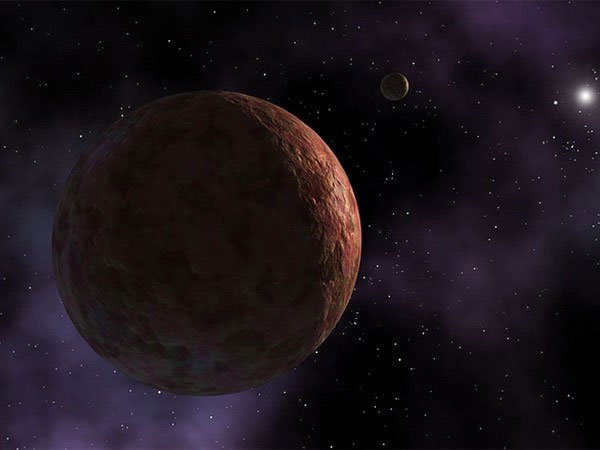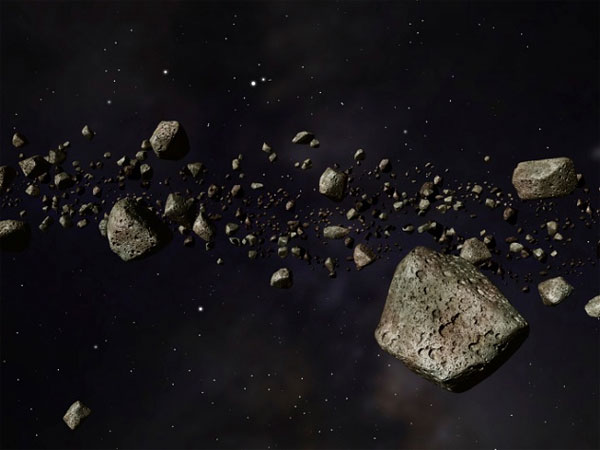8 planets are not true to haunt the scientific world
The existence of the planets below has more or less influenced the traditional view of astronomers.
1. Tyche

Tyche is the hypothesis of a giant gas planet within the cloud of the Oort nebula. Tyche is 25,000 UA (astronomical unit - the average distance from the Earth to the Sun, about 150 million km) and has an orbital cycle of up to 1.8 million years. Tyche's volume is quite large, It is 4 times the mass of Jupiter, and maintains a temperature of about - 73 degrees C.
However, Tyche's hypothesis does not really convince scientists. On March 7, 2014, NASA's report confirmed that no planet is like Tyche.
2. Sedna

Sedda is a very distant object in the Solar System discovered in 2003 by a group of scientists. It took 11,400 years to complete an elliptical orbit around the sun with the nearest position of 76 UA. But whether it really exists or not is still a big question for scientists.
3. The strange planet in the Kuiper belt
The Kuiper belt is the solar system's objects spread from Neptune's orbit (about 30 AU) to 44 AU from the Sun.

The objects in the Kuiper belt are all the size of an asteroid. Pluto, the smallest "former planet" in the Solar System, is considered part of the Kuiper belt. The number of celestial bodies found in the belt is increasing.
However, at a distance of 49 AU to the Sun, the number of objects observed markedly declined is still unknown.
Some argue that something must exist outside the perimeter and big enough to wipe out any remaining debris, perhaps as big as Earth or Mars.
This view is still controversial and it is very difficult to detect this planet.
4. Planet - V

Planet - V is said to exist between Mars and the asteroid belt. It may have collided with the moon and left on the moon a lot of debris (one of which was only formed by colliding with a celestial body - the process of producing enough temperature to melt the stone. ) that Apollo has collected.
Therefore there is a theory that the reason that planet V disappeared is because it sucked out of orbit and collided with the moon before evaporating because it hit the sun.
5. Phaeton

Since 1802 it has been believed that Phaeton actually existed between Mars and Jupiter's orbit. The asteroid belt today formed is the product left over when the Phaeton was destroyed.
However, the theory of Phaeton's existence is still controversial in the scientific world to this day.
6. Vulcan

Abnormal Mercury orbits make scientists a hypothesis within the orbit of a starfish that exists in a small planet called Vulcan.
However, the scientists looked for the Vulcan for a long time but did not see it. So far, the search process continues and hopefully one day will find it.
7. Theia

Theia was thought to have collided with the earth about 4.4 billion years ago, a part of its material being shot into Earth's orbit and forming the moon.
Theia was about the size of Mars, lying in orbit between the sun and the earth. However, many theories suggest that moon formation is attributed to many factors in which Theia is just one of them.
8. Planet - X

In the early 20th century, scientist Percival Lowell proposed a hypothesis that there was a planet outside of Neptune that we had not observed.
He named it planet-X, simply because Uranus's gravitational force was not enough to stabilize Neptune's orbit unless another planet was added.
However, today scientists have proved that no planet exists outside Hai Vuong Tinh. Even so, the term planet - X is still used today to refer to the unexplored mysterious planet.
- Unknown mystery about planets outside the solar system
- Discover more 18 large planets
- Summarize the news 'hot' week 1 July
- The wrong scientific knowledge that everyone believes is true
- Why are planets spherical, and meteorites?
- Detected more than 362,000 planets
- 10 outstanding scientific discoveries in 2008
- 10 spooky phenomena under a scientific perspective
- 'What is love?' through a scientific perspective
- Discover more than 700 planets outside the solar system
- Planets in the Solar System
- Startling things like jokes
 Van Allen's belt and evidence that the Apollo 11 mission to the Moon was myth
Van Allen's belt and evidence that the Apollo 11 mission to the Moon was myth The levels of civilization in the universe (Kardashev scale)
The levels of civilization in the universe (Kardashev scale) Today Mars, the sun and the Earth are aligned
Today Mars, the sun and the Earth are aligned The Amazon owner announced a secret plan to build a space base for thousands of people
The Amazon owner announced a secret plan to build a space base for thousands of people